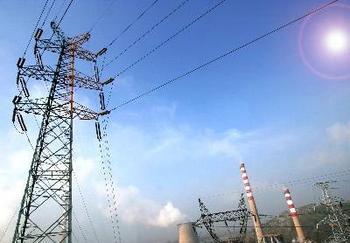 On the 19th, at the third China Electric Power Development and Technology Innovation Forum, the theme of "Innovation-Driven Development" was used to discuss the latest developments, latest achievements and cutting-edge technologies in energy and power research at home and abroad, and to look forward to the development trends of China's energy and power technologies. It is reported that the forum was hosted by the China Electric Power Research Institute and has been held twice since 2009.
On the 19th, at the third China Electric Power Development and Technology Innovation Forum, the theme of "Innovation-Driven Development" was used to discuss the latest developments, latest achievements and cutting-edge technologies in energy and power research at home and abroad, and to look forward to the development trends of China's energy and power technologies. It is reported that the forum was hosted by the China Electric Power Research Institute and has been held twice since 2009. “The State Grid Corporation will accelerate the UHV construction, serve the development of clean energy, build smart power systems, promote energy substitution, strengthen basic research reserves, vigorously promote energy strategic transformation, and strive to build a safe, reliable and efficient modern power grid system.†Chairman Liu Zhenya, general manager of the State Grid Corporation of China, pointed out in the keynote report: “In eight years from 2013, we will invest more than 3 trillion yuan to build the national grid.â€
For the development of UHV, Liu Zhenya said: “At present, the development of UHV has formed a broad consensus and the conditions for full acceleration have been met. At the same time, UHV’s success is to build transnational and transcontinental transmission channels, establish intercontinental power markets, and promote global energy resources. Optimal allocation provides strategic options, such as transmission from China, Mongolia, Russia's Far East, and Kazakhstan to Europe, which is not only technically feasible but also fully economically competitive."
In addition, Liu Zhenya believes that “the power grid is the carrier for transmission, and it is also the platform for the electricity market. The key to electric power reform is the introduction of measures such as the electricity pricing mechanism, which is determined by software, not hardware.â€
Subsequently, the honorary chairman of the conference and the vice president of the Chinese Academy of Engineering Xie Kechang stated in the keynote report: “The power grid is the physical platform supporting the construction of the power market system. It plays a role in the promotion of the market system and the competition mechanism. With regard to regulatory capabilities, any reforms and innovations must for the first time guarantee their safety, stability, and economic performance, and they must not reform for reform."
For the development model of China's third-generation power grid, Zhou Xiaoxin, academician of the Chinese Academy of Sciences, believes: “In the foreseeable future, China will always have the basic needs of large-capacity long-distance transmission of electricity. In the future, the West-to-East power transmission grid will Coal-fired large-capacity long-distance transmission is mainly used to convert hydropower, coal-fired power, large-scale wind power and desert solar power. The function of the transmission grid will be transformed from simple transmission of electric energy to transmission of electric energy and realization of various power supply mutual compensation adjustments. As a result, the composition of China’s third-generation grids in the future will follow the model of combining the national backbone transmission grid with local transmission and distribution networks and microgrids.â€
In addition, the participants also discussed "electric power system and automation," "energy and power generation," "transmission and transformation projects," and "electrical materials and electricity." In the four sub-venues, several academicians and experts discussed the key issues of “multi-end HVDC transmission technology development and challengesâ€, “strategic thinking on clean energy in China†and “large-scale renewable energy power transmission and grid connection in the western region. The 26 topics, including the “New Energy, Smart Grid, and the Development of Global Electric Vehicles,†were used for presentations and technical exchanges.
BLPS laser safety protective device is designed for personal safety used on hydraulic bender.
The dynamic test technology it used has passed the Type 4 functional safety assessment by TUV, and get the national invention patent. The product reaches the advanced technological level of similar products.
BLPS laser safety device provides protection zone near the die tip of the bender to protect fingers and arms of the operator in close to the upper mold die tip. It is the most effective solution so far to preserves the safety and productivity of the bender.
Press Brake Protection,Laser Guarding Device,Press Brake Guarding Systems,Press Brake Guarding
Jining KeLi Photoelectronic Industrial Co.,Ltd , https://www.sdkelien.com
